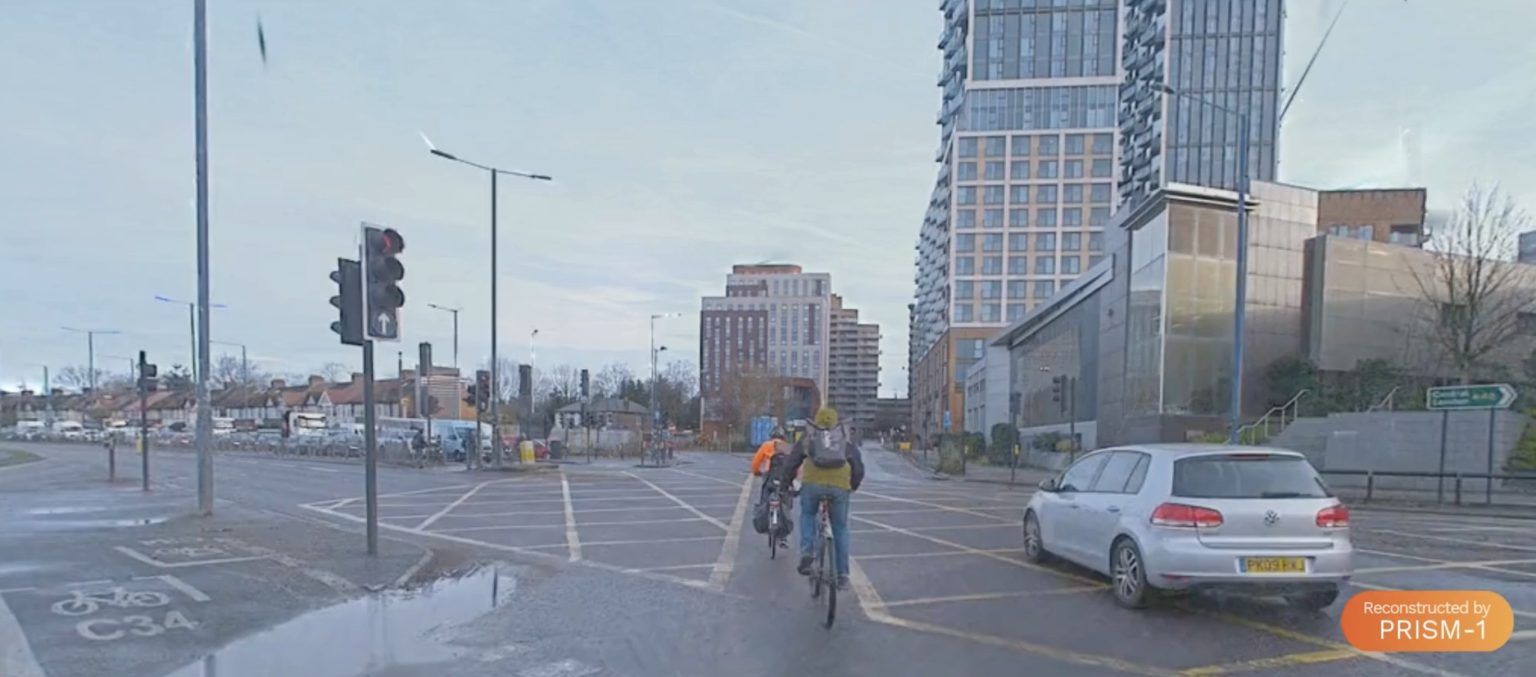Wayve launches PRISM-1 4D reconstruction model for autonomous driving
Wayve says PRISM-1 enables scalable, realistic re-simulations of complex scenes with minimal engineering or labeling input.
The post Wayve launches PRISM-1 4D reconstruction model for autonomous driving appeared first on The Robot Report.
Wayve, a developer of embodied artificial intelligence, launched PRISM-1, a 4D reconstruction model that it said can enhance the testing and training of its autonomous driving technology.
The London-based company first showed the technology in December 2023 through its Ghost Gym neural simulator. Wayve used novel view synthesis to create precise 4D scene reconstructions (three dimensions in space plus time) using only camera inputs.
It achieved this using unique methods that it claimed will accurately and efficiently simulating the dynamics of complex and unstructured environments for advanced driver-assist systems (ADAS) and self-driving vehicles. PRISM-1 is the model that powers the next generation of Ghost Gym simulations.
“PRISM-1 bridges the gap between the real world and our simulator,” stated Jamie Shotton, chief scientist at Wayve. “By enhancing our simulation platform with accurate dynamic representations, Wayve can extensively test, validate, and fine-tune our AI models at scale.”
“We are building embodied AI technology that generalizes and scales,” he added. “To achieve this, we continue to advance our end-to-end AI capabilities, not only in our driving models, but also through enabling technologies like PRISM-1. We are also excited to publicly release our WayveScenes101 dataset, developed in conjunction with PRISM-1, to foster more innovation and research in novel view synthesis for driving.”
PRISM-1 excels at realism in simulation, Wayve says
Wayve said PRISM-1 enables scalable, realistic re-simulations of complex driving scenes with minimal engineering or labeling input.
Unlike traditional methods, which rely on lidar and 3D bounding boxes, PRISM-1 uses novel synthesis techniques to accurately depict moving elements like pedestrians, cyclists, vehicles, and traffic lights. The system includes precise details, like clothing patterns, brake lights, and windshield wipers.
Achieving realism is critical for building an effective training simulator and evaluating driving technologies, according to Wayve. Traditional simulation technologies treat vehicles as rigid entities and fail to capture safety-critical dynamic behaviors like indicator lights or sudden braking.
PRISM-1, on the other hand, uses a flexible framework that can identify and track changes in the appearance of scene elements over time, said the company. This enables it to precisely re-simulate complex dynamic scenarios with elements that change in shape and move throughout the scene.
It can distinguish between static and dynamic elements in a shelf-supervised manner, avoiding the need for explicit labels, scene graphs, and bounding boxes to define the configuration of a busy street.
Wayve said this approach maintains efficiency, even as scene complexity increases, ensuring that more complex scenarios do not require additional engineering effort. This makes PRISM-1 a scalable and efficient system for simulating complex urban environments, it asserted.
WayveScenes 101 benchmark released
Wayve also released its WayveScenes 101 Benchmark. This dataset comprises 101 diverse driving scenarios from the U.K. and the U.S. It includes urban, suburban, and highway scenes over various weather and lighting conditions.
The company says it aims for this dataset to support the AI research community in advancing novel view synthesis models and the development of more robust and accurate scene representation models for driving.
Last month, Wayve closed a $1.05 billion Series C funding round. SoftBank Group led the round, which also included new investor NVIDIA and existing investor Microsoft.
Since its founding, Wayve has developed and tested its autonomous driving system on public roads. It has also developed foundation models for autonomy, similar to “GPT for driving,” that it says can empower any vehicle to perceive its surroundings and safely drive through diverse environments.
The post Wayve launches PRISM-1 4D reconstruction model for autonomous driving appeared first on The Robot Report.

